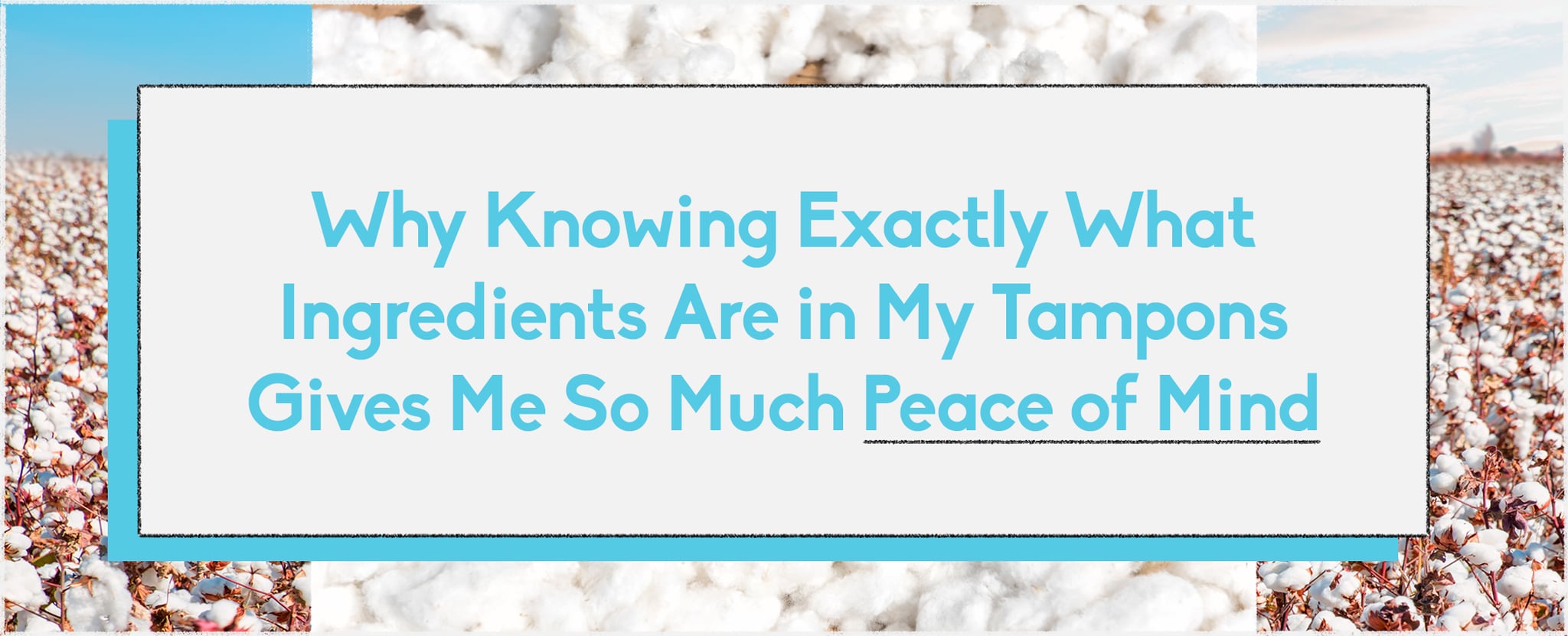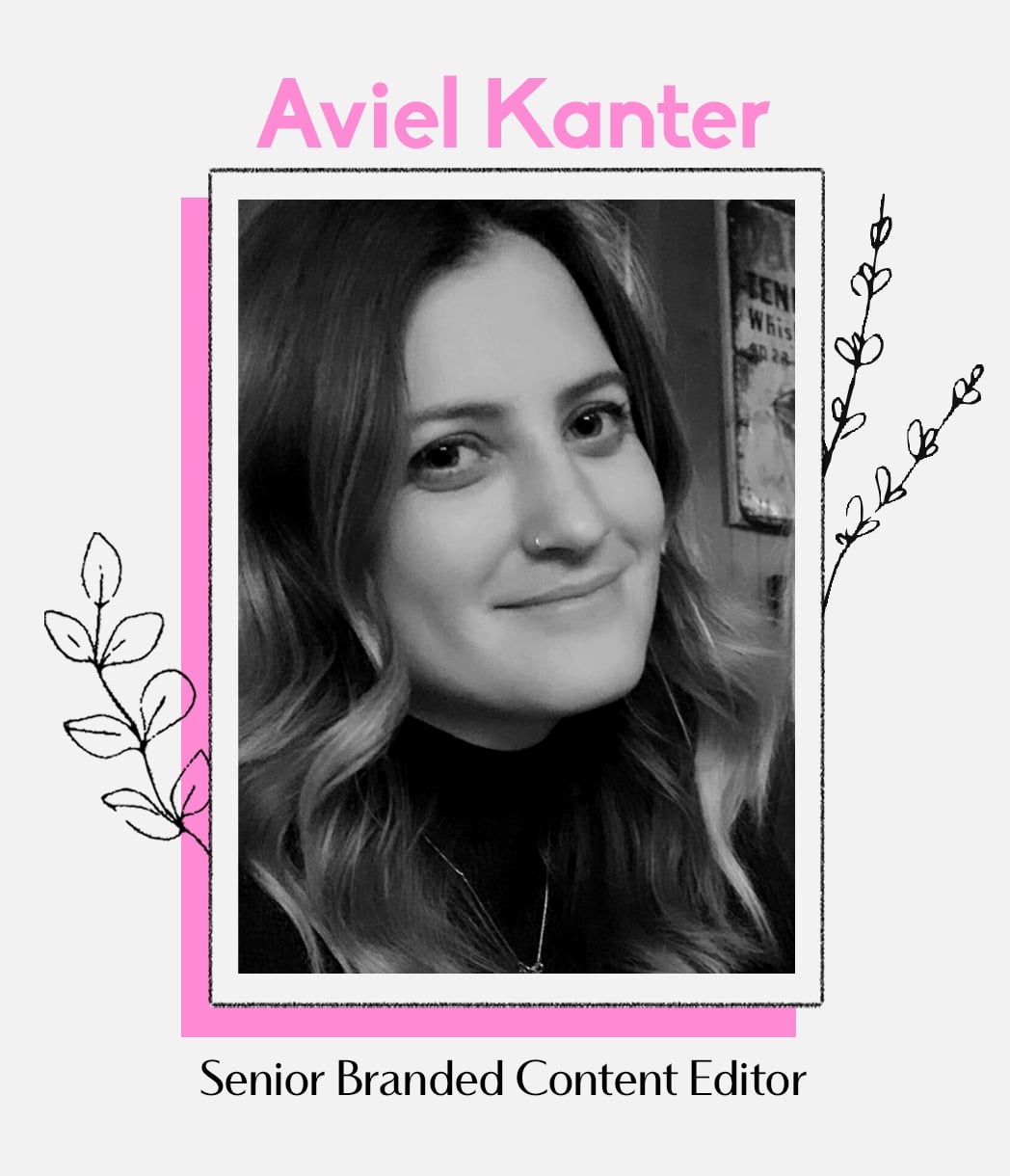


Now more than ever, I'm hyperaware of what I'm putting in my body, from the food I'm eating to the products I use in my skin-care and hair-care routines. I'm constantly asking myself questions when I go to buy something like: What exactly is in in the food or product formula and how can I make as little impact on the environment as possible? Basically: What do I need to know to feel good about what I'm buying?
I recently started thinking a little bit more about the tampons I was buying and realized I really had no idea what they were really made of or how they were made. I mean, tampons are something going in my body, so shouldn't I be more informed? I did a little digging and found out that Tampax Pure uses organic cotton responsibly sourced within the USA to make its tampons.

Tampax Pure has also decided to be completely transparent about that process and will even show you the exact farms where the cotton in the tampons in your specific box came from using a technology called blockchain*. For example, my box came with a QR code — I scanned it and was brought to an app. From there, I was able to see that the organic cotton was harvested in 2017 at Eastland Farms in Seminole, TX; went through the ginning process on Jan. 2, 2017, at King Mesa Gin in Dawson County, TX; was purified at Barnhardt Manufacturing in Charlotte, NC; and was finally packaged at the Tampax plant in Auburn, ME. How cool is that?

So you might be wondering why I care so much about this. After all, it's just cotton, right? Wrong! In fact, we should think about organic cotton in the same kind of way we think about natural beauty products or organically grown produce — meaning, understanding where the ingredients all originated and how they came to be on your face or on your plate. Knowledge is power, amirite? Plus, there are so many things to be anxious about in life, right now especially, so knowing that my tampons came to me through a process that I can see and understand is just one way I can alleviate some stress.
So let's get into it! Why organic cotton, specifically? Organic cotton is grown using natural, non-genetically-modified seeds, and the soil is fertilized using organic fertilizer. There is also attention paid to the health of the soil; Tampax Pure suppliers use beneficial insects, composting, and crop rotation to maintain a healthy balance in the organic matter in the soil. Then, the organic cotton is harvested after the first frost to allow for natural defoliation (i.e. removing the leaves of the plant), eliminating the need to do it chemically.

Once the organic cotton itself is harvested and ginned, it is further subjected to organic standards when it comes to the purifying cycle. At an organic plant like Barnhardt Manufacturing Company, where all Tampax Pure cotton is sent, the cotton is cleaned through a totally chlorine-free process. The cotton is gently cleaned and whitened using oxygen purification, which is free of dyes, fragrances, and chlorine bleaching.
Are you feeling more informed already? I certainly am. So try out Tampax Pure for yourself — because transparency equals peace of mind.
Find Tampax Pure at your favorite local retailer, and click here if you want to learn more about how each Tampax Pure tampon is made.